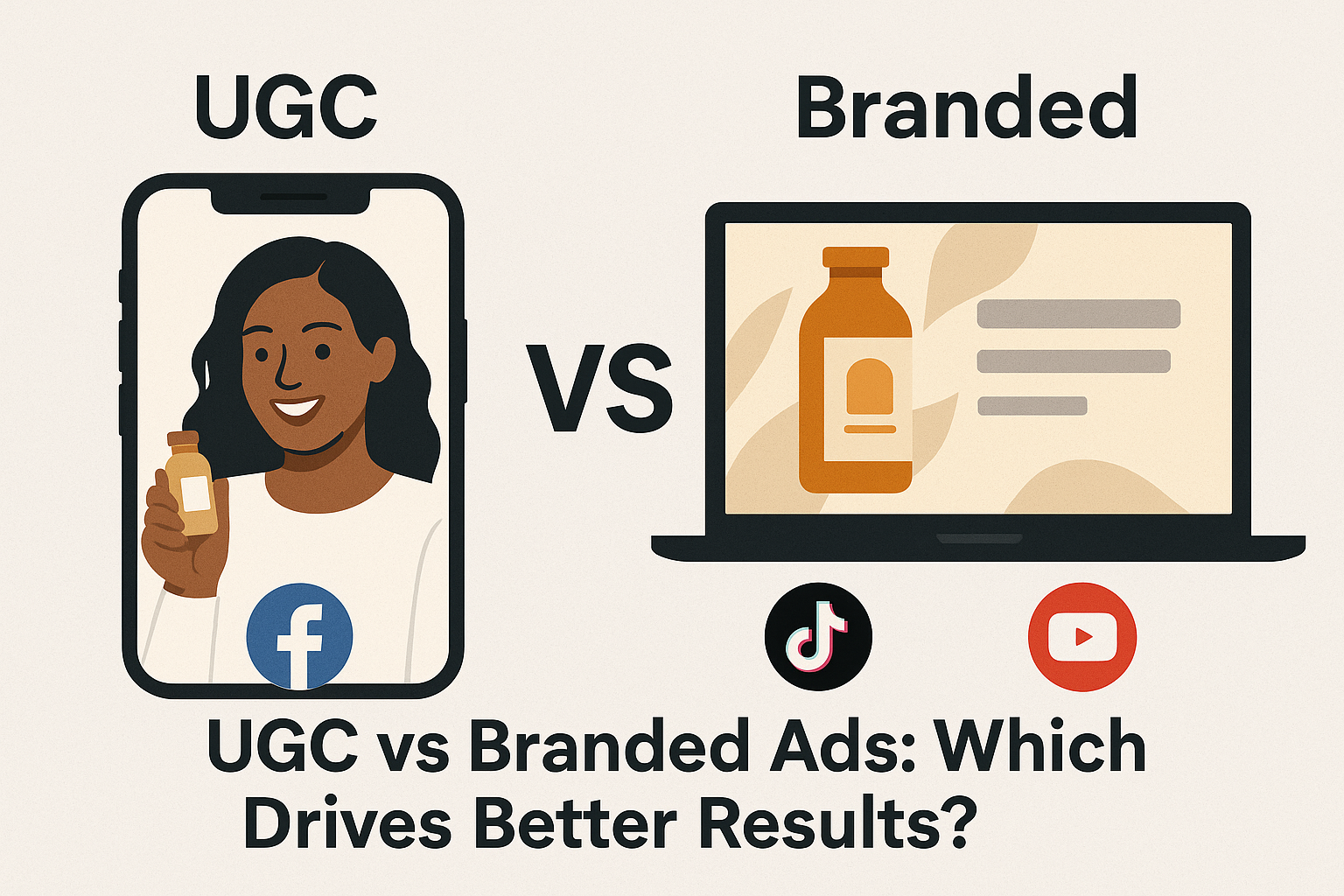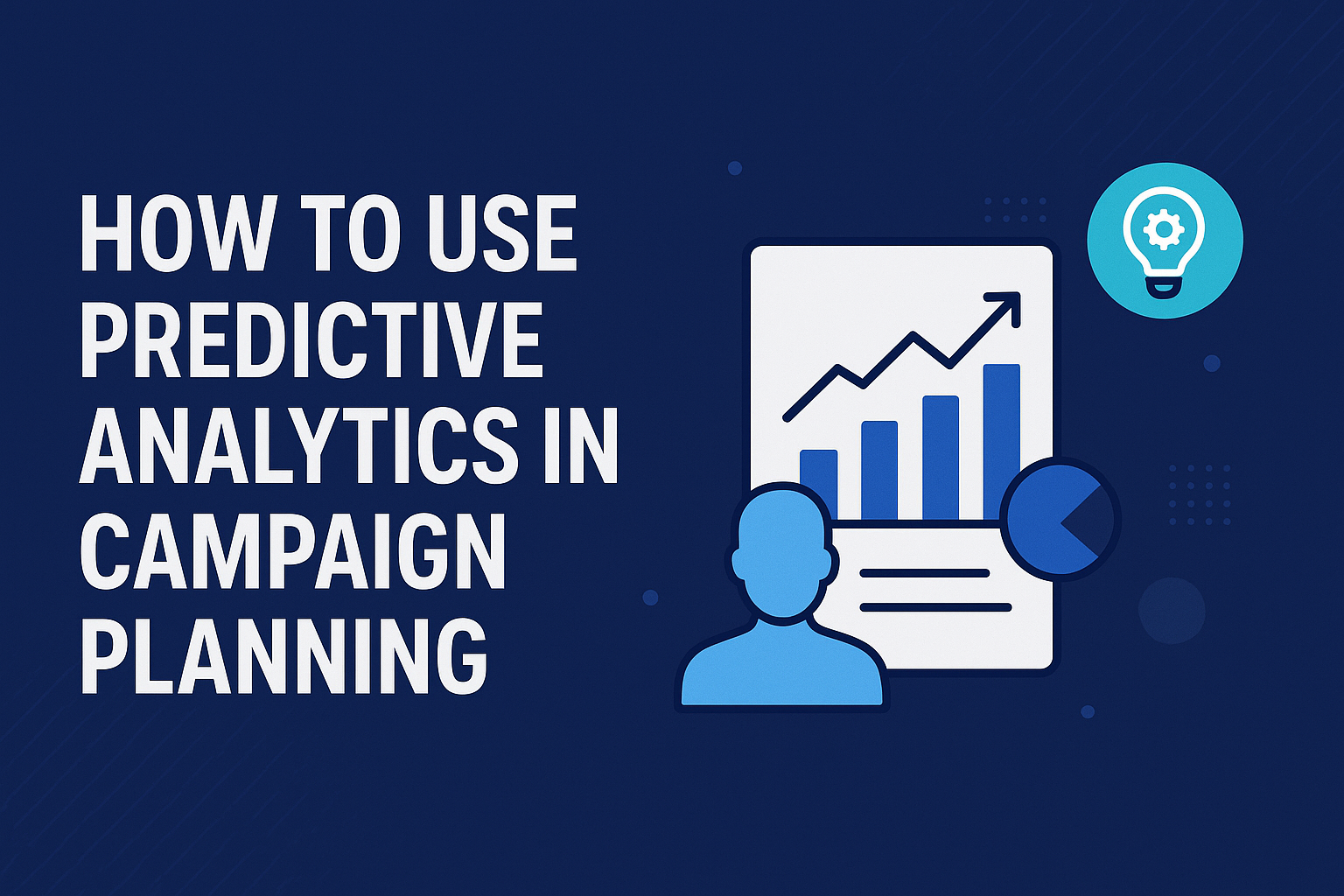
In a digital world dominated by fast-scrolling, short attention spans, and increasing ad fatigue, advertisers are under pressure to deliver high-performing creatives that capture attention and convert. As brands scale campaigns across Meta, TikTok, and YouTube, one debate consistently surfaces: UGC vs branded ads which truly drives better results?
From global e-commerce brands to bootstrapped startups, the tension between authenticity and polish is clear. User-generated content (UGC) offers relatability, while branded creatives bring consistency and control. But when it comes to ROAS, CTR, and engagement which wins?
This deep-dive explores both creative strategies in detail, compares their performance across major platforms, and provides actionable takeaways on how to blend both for maximum impact.
What Is UGC (User-Generated Content)?
User-generated content is any media created by real users, customers, or influencers that showcases their genuine experience with a product or service. It often includes:
- Customer testimonials or reviews
- “Unboxing” or tutorial videos
- Reaction clips or “TikTok-style” skits
- Lifestyle photos or product use cases
UGC has taken over platforms like TikTok and Instagram Reels due to its informal, authentic tone that resonates with modern consumers. Brands either repurpose organic UGC or commission creators to produce UGC-style content.
UGC Pros
- Relatable and authentic
- Lower production cost
- High performance in social ads
- Builds trust with new customers
UGC Cons
- Limited brand control
- Quality inconsistency
- Hard to scale without structure
What Are Branded Ads?
Branded ads are polished, company-produced creatives that follow brand guidelines, tone, and quality standards. These include:
- High-budget video productions
- Cinematic product shots
- Scripted brand stories
- Professionally animated motion graphics
Branded creatives are essential for brand-building campaigns, website banners, and top-of-funnel awareness, especially on YouTube and TV.
Branded Ad Pros
- Complete brand control
- High-quality production
- Consistent brand identity
- Scalable across channels
Branded Ad Cons
- Higher production costs
- May feel impersonal
- Lower engagement on social media
Performance Comparison: UGC vs Branded Ads Across Platforms
Let’s compare how each creative type performs across Meta (Facebook/Instagram), TikTok, and YouTube.
Meta (Facebook & Instagram)
UGC Ads:
- CTR ↑ by 20–40%
- CPC ↓ by 30–50%
- ROAS ↑ by 2.5x in many eCommerce campaigns
Branded Ads:
- Strong for retargeting & storytelling
- Good brand recall but lower CTRs
- Often used in carousels or catalog ads
Verdict:
UGC outperforms in direct response campaigns. Branded content is ideal for mid-funnel engagement and remarketing.
TikTok
UGC Ads:
- Native look & feel = high watch time
- Best for viral hooks & quick conversions
- Uses sound, captions, and trends effectively
Branded Ads:
- Often skipped if overly polished
- Requires creative adaptation (storyline + humor)
- Better for influencer-led branded collabs
Verdict:
TikTok thrives on authenticity. UGC is the clear winner here. Branded ads must emulate TikTok’s native style to succeed.
YouTube
UGC Ads:
- Less effective for long-form storytelling
- Works in Shorts format with high-energy cuts
Branded Ads:
- High-impact with strong visual storytelling
- Best for product launches, demos, testimonials
Verdict:
YouTube supports branded content more than UGC, especially for top-of-funnel awareness. However, short UGC reels work in YouTube Shorts placements.
What the Data Says: Industry Benchmarks
| Metric | UGC Performance | Branded Ads Performance |
|---|---|---|
| Click-Through Rate (CTR) | ↑ 3.4% avg. | ↓ 1.1–2.0% avg. |
| Cost-Per-Click (CPC) | ↓ $0.60 avg. | ↑ $1.20+ avg. |
| ROAS | ↑ 3–6x | 2–4x |
| Engagement Rate | ↑ 4–5% | ↓ 1.5–2.5% |
| Production Cost | $150–$800 | $5,000+ |
According to Meta’s internal case studies and DTC growth brands, UGC often drives 2–3x better ROI compared to branded ads especially for eCommerce products under $150.
When to Use UGC Creatives
- Top-of-funnel cold traffic
- New product announcements via creators
- Product demos or unboxing reels
- Testimonials for direct conversion
- Launching new offers or bundles
UGC is ideal for storytelling + relatability. It works best when trying to earn trust quickly.
When to Use Branded Creatives
- Brand introduction campaigns
- YouTube pre-roll and mid-roll ads
- Retargeting users with value-driven brand stories
- High-ticket products that need a strong brand feel
- Email marketing banners and landing pages
Use branded ads when visual consistency, emotional storytelling, and brand perception are essential.
Blending UGC and Branded for Best Results
The top-performing brands don’t choose either/or they blend both in a well-rounded creative strategy.
Best Practices for a Hybrid Creative Strategy:
- Start with UGC to hook attention
- Follow up with branded content to reinforce trust
- Use branded design elements (logos, fonts) subtly in UGC
- Repurpose long-form branded videos into UGC-style shorts
- Test formats across platforms and retarget accordingly
Pro Tip: Run A/B tests with the same offer using both UGC and branded versions. Measure performance based on platform behavior (not gut feeling).
The Psychological Edge of UGC
UGC works not just because it “feels real,” but because of psychological triggers:
- Social Proof: We trust other people’s experiences over polished claims.
- Mirror Neurons: We tend to replicate behaviors we see in peers (like using a product).
- Authenticity Bias: Consumers associate unpolished content with honesty.
- Parasocial Interaction: UGC mimics friend-to-friend recommendations, boosting conversion.
Challenges in Scaling UGC
Despite its performance edge, UGC comes with its own set of operational challenges:
- Creator sourcing & briefing
- Inconsistent tone or messaging
- Compliance (disclosures, rights usage)
- Burnout of top-performing creatives
To scale UGC:
- Build a creator library
- Use whitelisting for creator ads
- Refresh creatives every 2–3 weeks
- Systematize content briefs and templates
The Rise of UGC Agencies & Creator Marketplaces
As demand for UGC rises, creator platforms like Billo, Minisocial, Trend, and agencies that specialize in UGC production have exploded.
These platforms offer:
- On-demand UGC at scale
- Affordable packages
- Pre-vetted creators with niche audiences
Outsourcing UGC doesn’t mean losing authenticity — it means creating repeatable, performance-tested formats.
FAQs: UGC vs Branded Ads
Q1: Which is cheaper UGC or branded ads?
A: UGC is significantly cheaper to produce. UGC costs range from $100–$800 per video, while branded content often exceeds $5,000+ depending on production.
Q2: Is UGC only for TikTok?
A: No. UGC works across Meta, Instagram, YouTube Shorts, and even display ads. Any platform where consumers scroll quickly benefits from UGC’s native feel.
Q3: Can luxury brands use UGC?
A: Yes, but carefully. UGC must still align with brand aesthetics. High-end creators or stylized UGC formats can work well for premium positioning.
Q4: What kind of UGC performs best?
A: High-performing formats include:
- “Problem → Solution” hooks
- “Day in the life with product”
- Unboxing + testimonial mashups
- Trend participation + humor
Q5: Can branded ads ever outperform UGC?
A: Yes, especially in top-of-funnel brand-building or video storytelling. High-ticket items also benefit from branded confidence-building creatives.
Q6: What’s the best UGC platform for beginners?
A: Platforms like Billo, Incense, or Trend are ideal. They offer affordable, vetted creators with simple briefing workflows for UGC beginners.
Q7: How often should I refresh UGC ads?
A: Every 2–3 weeks is ideal. TikTok and Meta algorithms fatigue fast. High-frequency creative refreshes keep performance strong.
The Verdict on UGC vs Branded Ads
When it comes to performance, UGC wins in CTR, ROAS, and engagement, especially for scroll-heavy platforms like TikTok and Instagram. However, branded ads are still crucial for reinforcing brand identity, credibility, and storytelling across YouTube and top-funnel campaigns.
The smartest marketers understand that it’s not about UGC vs branded ads it’s about using the right format at the right stage of the funnel.
To maximize results:
- Lead with UGC to earn attention.
- Follow with branded to build trust.
- Blend both in a consistent, test-driven framework.



